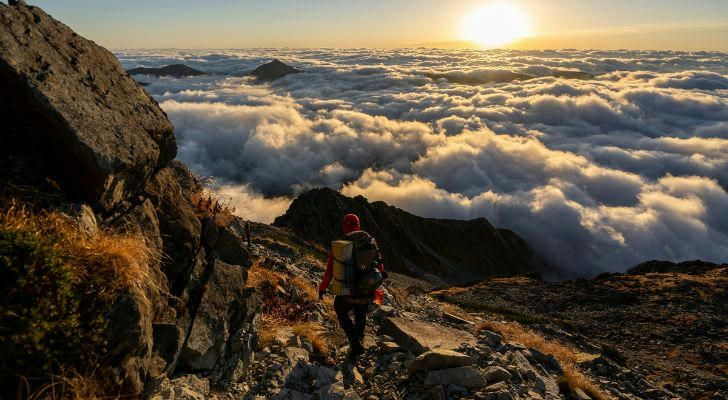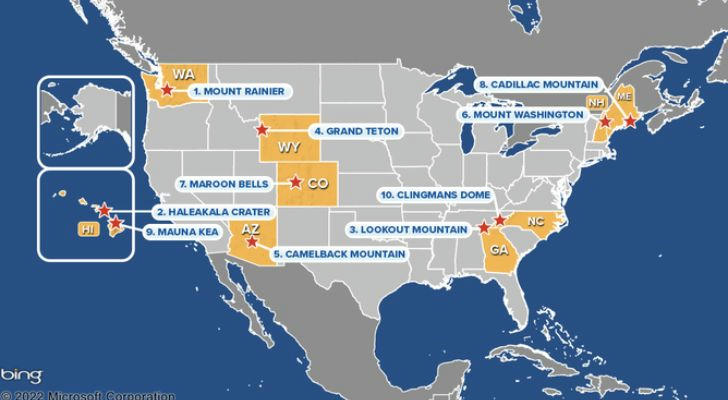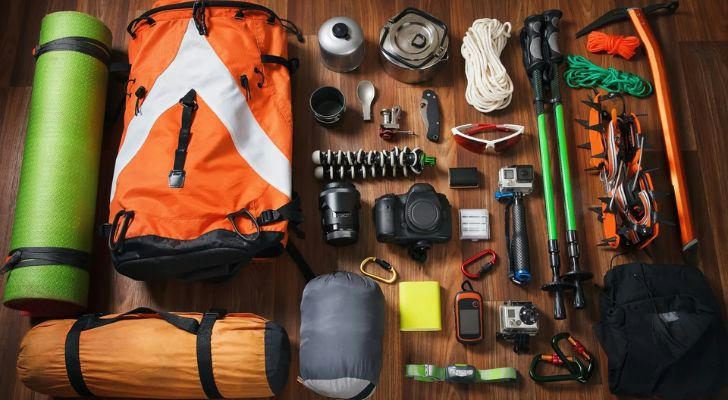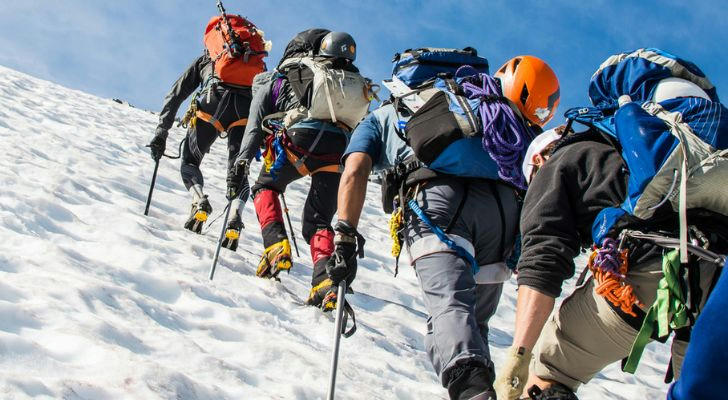Mountaineering: a journey to explore nature and challenge yourself
Mountaineering is more than just a challenging sport. It’s a way to connect with nature, push your limits, and grow as a person. According to the Outdoor Industry Association, outdoor activities like mountaineering contribute $887 billion to the U.S. economy. This shows how deeply outdoor recreation is woven into American life. From the tall Rocky Mountains to the scenic Pacific Northwest, the U.S. offers diverse landscapes that attract climbers of all levels. Whether you’re a beginner or an experienced climber, you’ll find amazing places to explore.

2. What Makes Mountaineering in the U.S. Special?
Mountaineering in the U.S. is unique because of its variety and accessibility. The country boasts some of the best climbing routes in the world, suitable for all skill levels. From easy scenic hikes to challenging technical climbs, there’s something for everyone.
Many climbers take courses to learn essential skills like navigation, survival, and climbing techniques. According to a survey by the American Alpine Club, over 70% of climbers participate in formal training before attempting major ascents. This focus on education helps climbers stay safe and protect the environment. U.S. climbers also follow the Leave No Trace principles to minimize their impact on nature, a practice endorsed by organizations like the National Park Service.
3. Popular Mountaineering Spots in the U.S.
The U.S. has many top destinations for mountaineering:
Mount Rainier
Mount Rainier in Washington is a favorite for climbers. It’s great for intermediate climbers with its challenging terrain and popular routes like Camp Muir and Disappointment Cleaver. The mountain is close to Seattle, making it accessible for weekend trips. According to the National Park Service, about 10,000 people attempt to summit Mount Rainier each year. This number highlights its popularity and accessibility.
Yosemite National Park
Yosemite is famous for its huge granite walls and waterfalls. El Capitan, the park’s most famous climb, attracts thousands of climbers every year, including world-class athletes. Yosemite offers over 2,000 climbing routes for all skill levels, from beginner-friendly paths to advanced technical climbs. The park also provides climbing education programs through its climbing ranger initiative, ensuring climbers are well-prepared for their adventures.
Rocky Mountains
The Rocky Mountains stretch from Canada to New Mexico and offer endless climbing opportunities. You can climb high peaks in Colorado or rugged terrain in Wyoming. Rocky Mountain National Park alone gets over 4 million visitors each year, many of whom go climbing. This high visitation rate underscores the region’s appeal for mountaineers.
Grand Canyon National Park
The Grand Canyon is known for its amazing rock formations. While it’s mostly a hiking spot, the steep canyon walls also attract climbers. According to park statistics, about 250,000 people hike to the Colorado River and back each year. This challenging journey, which takes 1-2 days, showcases the canyon’s rugged beauty and attracts adventurers from around the world.

4. Gear and Safety Tips
Before you start climbing, make sure you have the right gear:
Navigation Tools: Bring a compass, maps, or a GPS device to stay on track.
Clothing: Dress in layers with moisture-wicking clothes, windproof jackets, and waterproof pants.
First Aid Kit: Pack a complete first aid kit with bandages, antiseptics, and any necessary medications.
Climbing Boots & Poles: Wear sturdy boots with good grip and use trekking poles to stay stable.
Safety Note: Check the weather before you go and be ready for sudden changes. According to the National Park Service, accidents often happen because of bad weather and tough terrain. Always plan your route and let someone know your itinerary.

5. How to Get Involved in Mountaineering
There are many ways to get started in mountaineering:
Join a Club: Many cities have mountaineering clubs where you can meet experienced climbers and go on group climbs. The American Alpine Club, for example, has local chapters across the country that offer resources and group trips.
Take a Course: Schools like the American Alpine Institute and NOLS offer courses for beginners and advanced climbers. These courses cover everything from basic hiking to technical climbing skills.
Hire a Guide: If you’re new to climbing or tackling a tough peak, a guide can help keep you safe and teach you along the way. Many national parks and private companies offer guided climbs, especially for beginners.
6. Physical and Mental Benefits of Mountaineering
Mountaineering is great for your body and mind. Physically, it builds strength, endurance, and heart health. The National Institutes of Health (NIH) notes that high-intensity activities like climbing can reduce the risk of heart disease and improve overall health. For example, a study found that regular climbers had lower rates of obesity and hypertension compared to non-climbers.
Mentally, mountaineering teaches resilience and focus. Climbing can be tough, but facing challenges like bad weather, altitude, or exhaustion builds mental toughness and increases confidence. Many climbers report that reaching the summit gives them a huge sense of accomplishment and peace of mind.

7. Conclusion
Mountaineering is a unique adventure that challenges you in many ways. The U.S. has amazing places to climb, from the rugged peaks of Mount Rainier to the stunning cliffs of Yosemite. Whether you’re just starting out or an experienced climber, there’s always a new mountain to explore. With the right training and gear, you can enjoy a lifetime of adventure, health benefits, and personal growth. As the demand for outdoor recreation grows, mountaineering will remain an important part of the U.S. outdoor culture.
